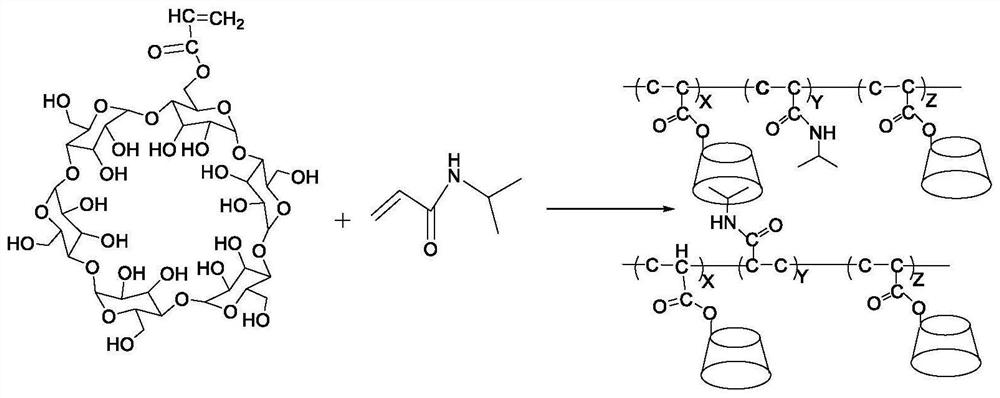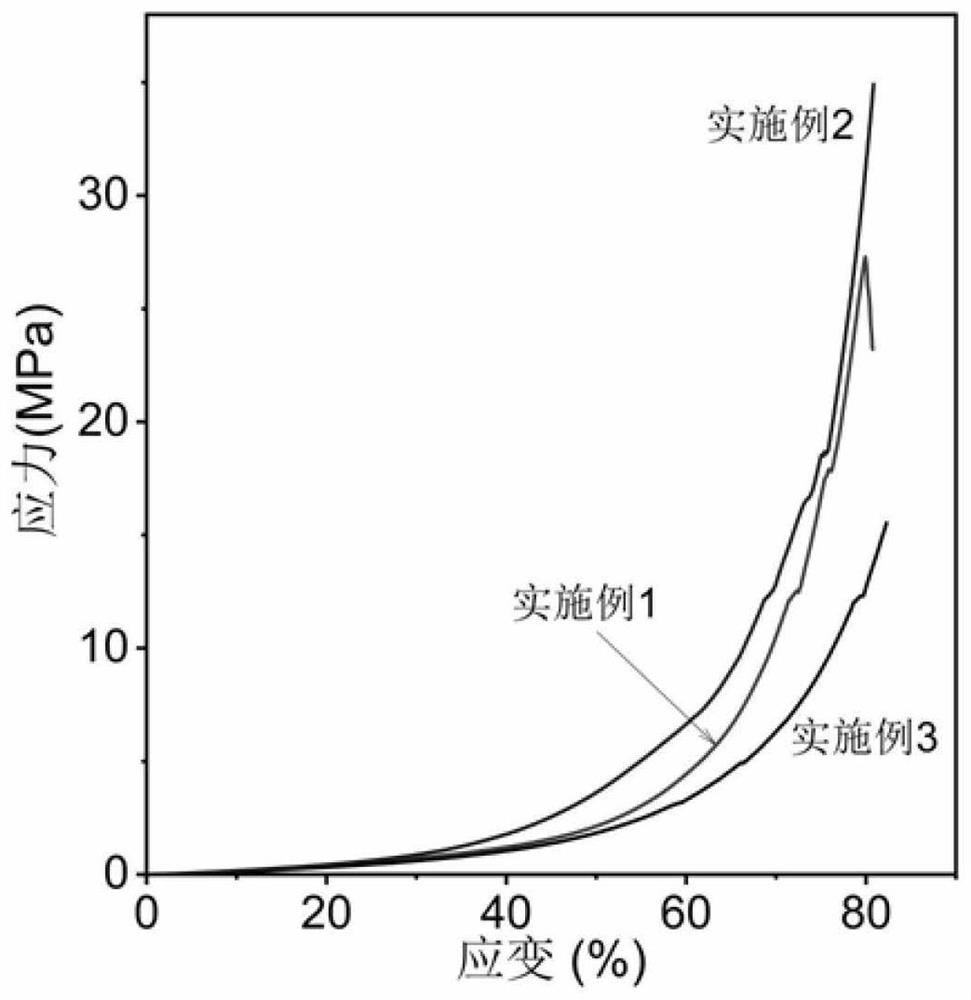A self-healing multiple light-responsive bilayer supramolecular hydrogel, its preparation method and application
A supramolecular hydrogel and self-healing technology, applied in the field of supramolecular chemistry, can solve problems such as application limitations of reversible deformation functions, failure to meet social needs, and lack of self-healing ability, etc., to achieve low production costs and prolong service life , No secondary pollution effect
- Summary
- Abstract
- Description
- Claims
- Application Information
AI Technical Summary
Problems solved by technology
Method used
Image
Examples
Embodiment 1~3
[0044] (1) Weigh N-isopropylacrylamide (720mg, 6.36mmol) and a certain amount of cyclodextrin monomer into 6ml of ultrapure water, stir and mix evenly, move to 0-5°C ice-water bath condition, add Graphene oxide aqueous dispersion, vented with argon (Ar 2 ) bubbling for 30min; weigh a certain amount of potassium persulfate (KPS), dissolve it in 400μl ultrapure water, add it to the reaction solution, and then add 30μl N,N,N',N'-tetramethylethylenediamine (TEMED) , to obtain the hydrogel layer 1 prepolymer solution. The hydrogel layer 1 was prepared by injecting it into a mold (60 mm×60 mm×1 mm) quickly with a syringe. The cross-linked structure of the hydrogel layer 1 is as follows figure 1 shown;
[0045] (2) Weigh N-isopropylacrylamide (720mg, 6.36mmol), a certain amount of cyclodextrin monomer, add acryloyloxyethyltrimethylammonium chloride to 6ml of ultrapure water, stir and mix well, Move to 0 ~ 5 ℃ ice-water bath condition, ventilate argon (Ar 2 ) bubbling for 30min; ...
Embodiment 4~6
[0050] According to the preparation process and raw material ratio of Examples 1, 2, and 3, only replacing α-cyclodextrin with β-cyclodextrin, the bilayer supramolecular hydrogels of Examples 4, 5, and 6 were obtained.
[0051] Performance Testing
[0052] The mechanical properties of the hydrogels obtained in Examples 1-3 were tested by optimizing the content of cyclodextrin through mechanical properties. The result is as image 3 As shown, in order to avoid the sample sliding on the bench, the hydrogel sample shape of the compression test is a cylinder. It was found that with the increase of cyclodextrin content, the crosslinking density of the hydrogel gradually increased, the entanglement between polymer chains was more, and the polymer network was tighter and denser. In the hydrogel of Example 3, cyclodextrin will affect the uniform dispersion of GO in the polymer network, causing the hydrogel to break when compressed, and its mechanical properties will decrease. Theref...
PUM
 Login to View More
Login to View More Abstract
Description
Claims
Application Information
 Login to View More
Login to View More - R&D
- Intellectual Property
- Life Sciences
- Materials
- Tech Scout
- Unparalleled Data Quality
- Higher Quality Content
- 60% Fewer Hallucinations
Browse by: Latest US Patents, China's latest patents, Technical Efficacy Thesaurus, Application Domain, Technology Topic, Popular Technical Reports.
© 2025 PatSnap. All rights reserved.Legal|Privacy policy|Modern Slavery Act Transparency Statement|Sitemap|About US| Contact US: help@patsnap.com



